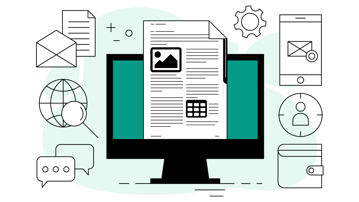Tackling complex proposals requires more than just putting in longer hours. Even if your business isn’t a giant, the intricacies of modern bids still demand a smart, streamlined approach to succeed in a competitive market. You don’t need an army of resources; what you need is to work smarter. Here’s how you can optimize your process to create winning proposals without burning out.
Embrace Strategic Growth
To keep up with the demands of complex proposals, it’s vital to stop relying on outdated processes. Trying to manage an increasing number of bids using the same old methods will only stretch your resources thin and cause unnecessary stress. Instead, prioritize growth that focuses on streamlining your proposal workflows.
Invest in proposal tools that provide instant access to accurate, up-to-date content, allowing you to quickly pull reliable information and focus on tailoring it to the needs of your prospective customers. Implementing a proposal management approach helps guide your team through the process, improving collaboration and ensuring you manage multiple proposals effectively without sacrificing quality.ity.
Customer-Centric Proposals Win
The complexity of your proposal should never overshadow the importance of the customer. When focusing too much on the mechanics of proposal creation—formatting, organization, approvals—you risk losing sight of the most important element: the customer's needs.
Instead of scrambling to create or reformat content, focus on delivering proposals that speak directly to the challenges and desires of the customer. Personalizing your proposals not only makes them stand out but also demonstrates your understanding of the customer's pain points. When you can shift your focus from administrative tasks to crafting proposals that resonate, you increase your chances of winning.
Suggested content



Change the Engagement Game
Today’s buyers don’t just want fast turnaround times; they expect accessible, engaging proposals delivered on their terms. With the rise of mobile-first business environments, many buyers now prefer to review proposals on their smartphones or tablets. To meet this demand, consider transforming your traditional PDF proposals into interactive, on-brand mini-websites that allow buyers to easily navigate, explore, and engage with your content.
Web-based proposals give you an edge over static documents, providing a dynamic experience that captures attention and keeps the conversation moving. By aligning your proposals with modern buyer preferences, you create a more engaging experience that sets you apart from your competitors.
Work Smarter to Win Complex Proposals
As Bob Iger once said, “The riskiest thing we can do is just maintain the status quo.” This holds true when it comes to handling complex proposals in today’s fast-paced market. Clinging to old methods won’t just limit your productivity—it will also prevent you from scaling, competing at a higher level and growing.
If you want to submit more winning proposals without exhausting your resources, you need to rethink your approach. Embrace growth, focus on your customer, and adapt to new ways of engaging. You’ll not only stay ahead of the competition but also maintain a healthier work-life balance while consistently delivering high-quality proposals.









